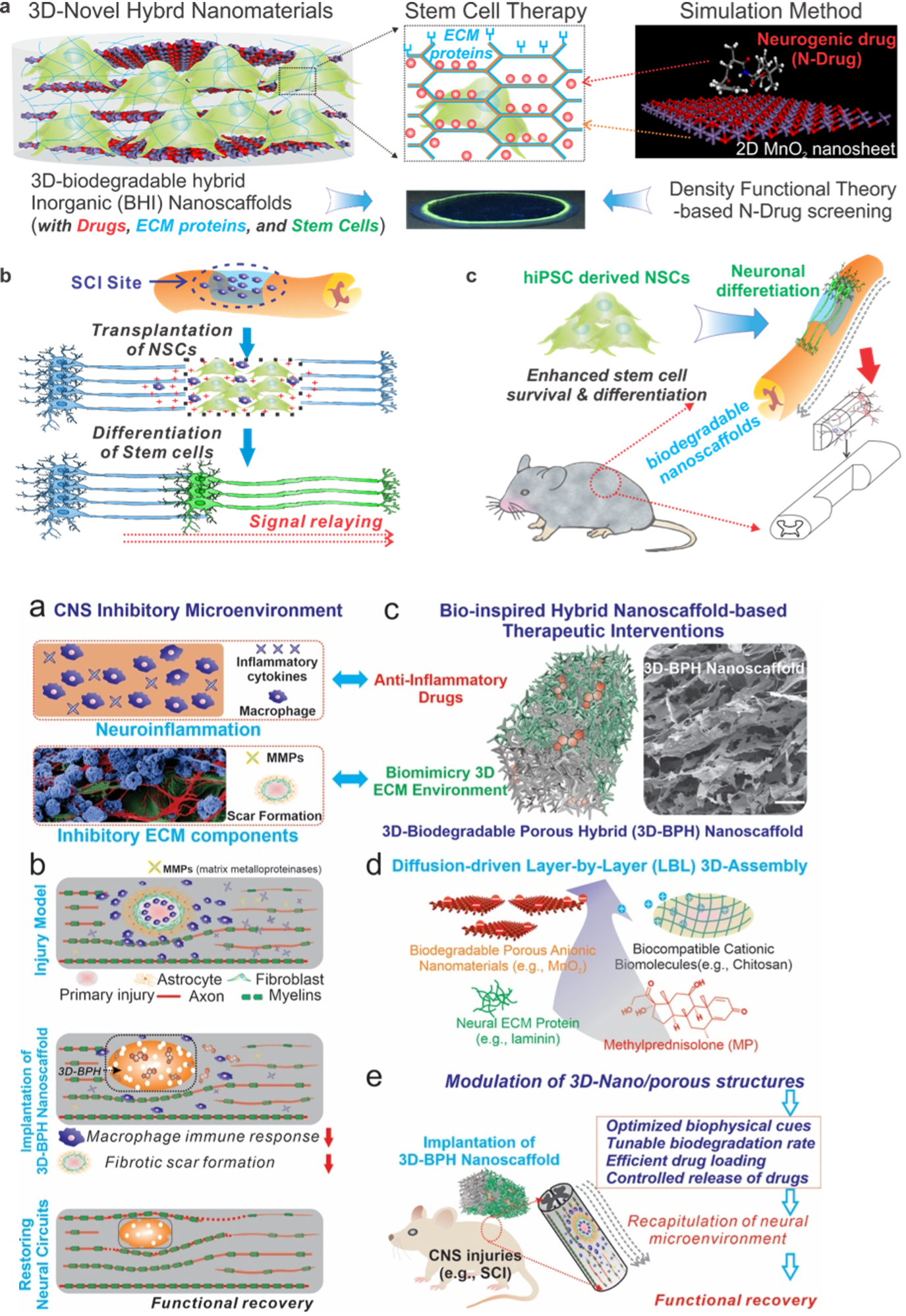Advanced Stem Cell Therapies for CNS injuries and Advanced in vivo Drug/Gene Delivery using Bioinspired Hybrid Nanoscaffolds
Central nervous system (CNS) injuries [e.g., spinal cord injury (SCI) and traumatic brain injury (TBI)] result in many cellular dysfunctions that may cause severe and permanent neurological deficits. Several current therapeutic approaches aim to bridge the lesion site through cellular transplantation to restore neural signaling, reduce inflammation, and prevent subsequent damage to the injured area. Given the intrinsically limited regenerative potential of the central nervous system (CNS) and the complex inhibitory environment of the injured spinal cord, effective strategies to generate a robust population of functional neurons derived from autologous stem cells [induced pluripotent stem cells (iPSCs) and neural stem cells (NSCs)] re-establishing the damaged neural circuitry are urgent clinical needs. However, several pertinent obstacles hinder successful transplantation strategies. First, due to the inflammatory nature of the injured spinal cord, most NSCs die soon after transplantation. Second, the extracellular matrix of the injured spinal cord is not very conducive to NSC survival and differentiation. Thus, we will address these challenges by combining a novel bioscaffold with therapeutic molecules (e.g., small molecules, biologics, genetic materials-RNAs/DNAs) to reduce inflammation and promote neuronal differentiation.
Key publications from our group:
1. Yang, L.; Conley, B. M.; Cerqueira, S. R.; Pongkulapa, T.; Wang, S.; Lee, J. K.†; Lee, K.-B.†, Effective Modulation of CNS Inhibitory Microenvironment using Bioinspired Hybrid-Nanoscaffold-Based Therapeutic Interventions. Advanced Materials 2020, 32 (43), 2002578.
2. Yang, L.; Chueng, S.-T. D.; Li, Y.; Patel, M.; Rathnam, C.; Dey, G.; Wang, L.; Cai, L.; Lee, K.-B.†, A biodegradable hybrid inorganic nanoscaffold for advanced stem cell therapy. Nature Communications 2018, 9 (1), 3147.

